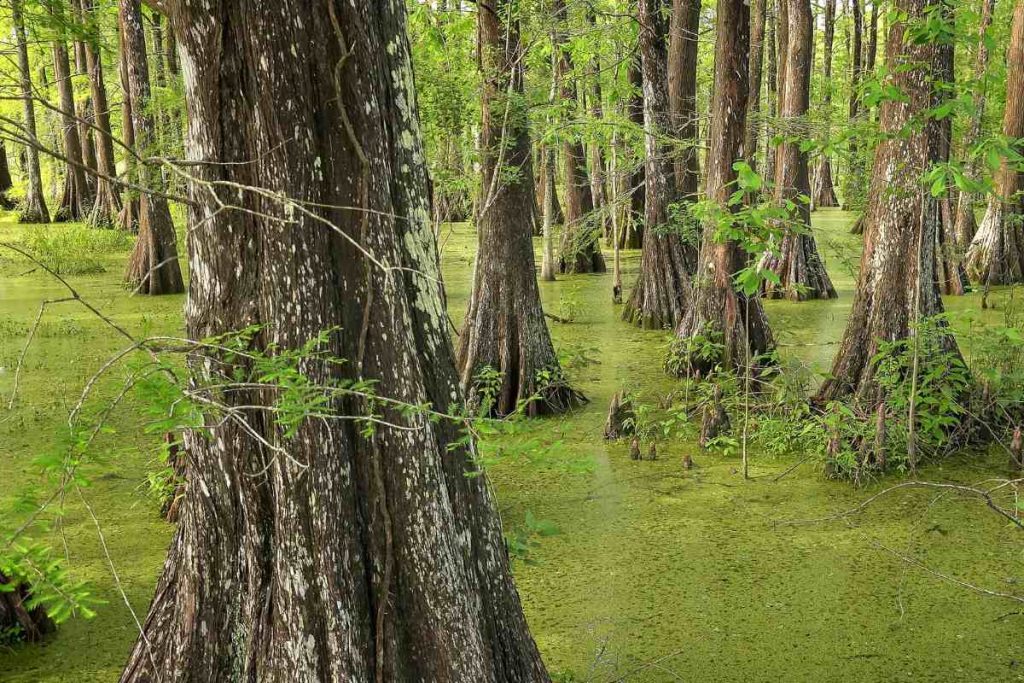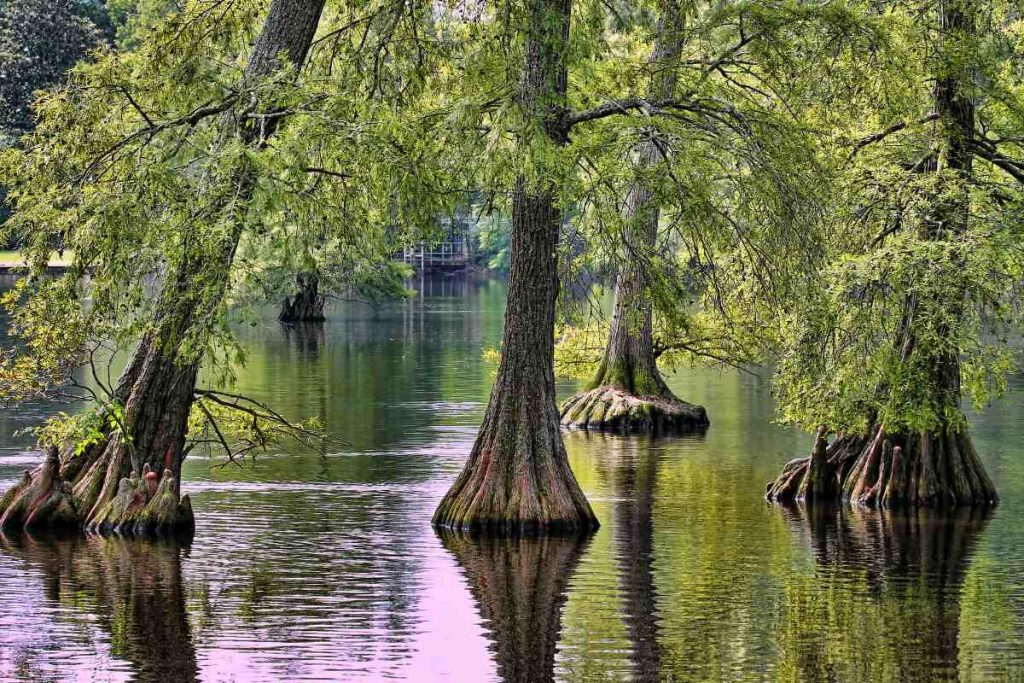The Bald Cypress: Nature’s Architectural Wonder and Symbol of Resilience
The bald cypress (Taxodium distichum) is a majestic tree that is native to the southeastern United States. It is known for its unique characteristics and significance in various aspects of the natural world. This article will delve into the fascinating world of the bald cypress, exploring its physical appearance, resilience, unique characteristics, role in ecosystems, ancient legacy, cultural significance, conservation efforts, and its use in urban landscapes.
The Bald Cypress: A Majestic Tree with Architectural Marvels
The bald cypress is a large deciduous conifer that can reach heights of up to 120 feet. It has a straight trunk that can grow to impressive diameters, often exceeding 10 feet. One of the most striking features of the bald cypress is its buttressed trunk, which provides stability and support in wet and swampy environments. These buttresses are large, flared structures that extend from the base of the tree and help anchor it in the soft soil.
Another architectural marvel of the bald cypress is its unique root structures known as “knees.” These knees are cone-shaped projections that emerge from the roots and rise above the water or soil surface. While their exact purpose is still debated among scientists, it is believed that they help provide oxygen to the tree’s roots in waterlogged conditions. The knees also provide additional stability to the tree by acting as anchors.
Unveiling the Resilience of the Bald Cypress: Surviving Against All Odds
The bald cypress is well-known for its ability to survive in challenging environments such as swamps and floodplains. It has developed several adaptations that allow it to thrive in these conditions. One such adaptation is its ability to tolerate both wet and dry conditions. The tree can withstand periods of flooding by developing specialized tissues that allow it to survive in anaerobic (oxygen-deprived) conditions. Conversely, during dry periods, the bald cypress can close its stomata (pores on the leaves) to reduce water loss and conserve moisture.
The bald cypress has also evolved to withstand hurricanes and other natural disasters. Its flexible branches and deep root system help it withstand strong winds, while its ability to tolerate flooding allows it to survive storm surges. Additionally, the tree’s thick bark provides protection against fire, another common occurrence in its natural habitat.
The Unique Characteristics of the Bald Cypress: A Symbol of Adaptability

The bald cypress possesses several unique characteristics that make it a symbol of adaptability in the natural world. One of these characteristics is its ability to grow in both wet and dry conditions. While it is commonly associated with swamps and wetlands, the bald cypress can also thrive in upland areas with well-drained soil. This adaptability allows the tree to colonize a wide range of habitats and contribute to ecosystem diversity.
Another unique characteristic of the bald cypress is its ability to regenerate and sprout new growth from its trunk. This allows the tree to recover from damage caused by storms or other disturbances. The bald cypress can also produce large quantities of seeds, which are dispersed by wind or water, further contributing to its ability to colonize new areas.
The Bald Cypress and Its Role in Ecosystems: A Haven for Biodiversity
The bald cypress plays a crucial role in maintaining healthy ecosystems by providing habitat and resources for a wide range of species. Its dense canopy provides shade and shelter for birds, mammals, and insects. The tree’s large branches and hollow trunks offer nesting sites for birds such as herons, owls, and wood ducks. The bald cypress also produces cones that provide food for various wildlife species.
In addition to providing habitat, the bald cypress plays a vital role in nutrient cycling and water filtration. Its extensive root system helps stabilize soil and prevent erosion, while its ability to tolerate flooding allows it to filter and purify water in wetland areas. The tree’s fallen leaves and branches contribute to the nutrient content of the soil, supporting the growth of other plants and organisms.
The Ancient Legacy of the Bald Cypress: A Living Witness of History
The bald cypress is known for its long lifespan, with some trees living for over a thousand years. This longevity makes it a living witness of past events and a valuable resource for scientists studying climate change and historical events. By analyzing the tree rings of bald cypress trees, scientists can reconstruct past climate patterns, including temperature and precipitation fluctuations. These records provide valuable insights into how ecosystems have responded to environmental changes over time.
Bald cypress trees have also been used to study historical events. For example, tree ring analysis has been used to date the construction of ancient buildings and structures. By comparing the age of the wood used in these structures with historical records, researchers can gain a better understanding of past civilizations and their architectural practices.
The Bald Cypress and Its Cultural Significance: From Native American Mythology to Modern Architecture

The bald cypress has played a significant role in various cultures throughout history. In Native American mythology, the tree is often associated with creation stories and is considered a symbol of strength and resilience. It was also used by Native Americans for various purposes, including building canoes, houses, and tools.
In modern architecture, bald cypress wood is highly valued for its durability, resistance to decay, and beautiful grain patterns. It has been used in the construction of famous buildings such as the historic French Quarter in New Orleans and the iconic St. Louis Cathedral. Bald cypress wood is also popular for furniture making, flooring, and decorative items.
Conservation Efforts for the Bald Cypress: Preserving a Living Natural Wonder
Despite its resilience, the bald cypress faces several threats, including deforestation and climate change. Deforestation for timber and land development has led to the loss of many bald cypress forests. Climate change poses a threat to the tree’s ability to survive in its natural habitat, as rising temperatures and changes in precipitation patterns can disrupt its delicate balance of wet and dry conditions.
To protect and preserve the bald cypress, various conservation efforts and initiatives have been implemented. These include establishing protected areas, promoting sustainable forestry practices, and raising awareness about the importance of preserving this unique tree species. Additionally, research is being conducted to better understand the bald cypress’s ecological role and develop strategies for its conservation.
The Bald Cypress in Urban Landscapes: Adding Beauty and Resilience to Cityscapes
The bald cypress is increasingly being used in urban landscapes to enhance beauty and provide environmental benefits. Its unique architectural features, such as its buttressed trunk and knees, make it an attractive addition to parks, gardens, and streetscapes. The tree’s ability to tolerate a wide range of soil conditions and its resilience to urban stresses such as pollution and compacted soil make it well-suited for urban environments.
Cities and parks around the world have successfully incorporated bald cypress trees into their design. For example, the City Park in New Orleans is home to a magnificent grove of bald cypress trees that provide shade, habitat for wildlife, and a beautiful backdrop for visitors. The High Line in New York City also features bald cypress trees that add greenery and visual interest to the elevated park.
Celebrating the Bald Cypress as Nature’s Architectural Wonder and Symbol of Resilience
In conclusion, the bald cypress is a truly remarkable tree that deserves our appreciation and protection. Its unique characteristics, architectural marvels, resilience, role in ecosystems, ancient legacy, cultural significance, and use in urban landscapes make it a fascinating subject of study and admiration. By understanding and valuing the bald cypress, we can work towards preserving this living natural wonder for future generations to enjoy. Let us celebrate the bald cypress as nature’s architectural wonder and symbol of resilience.

